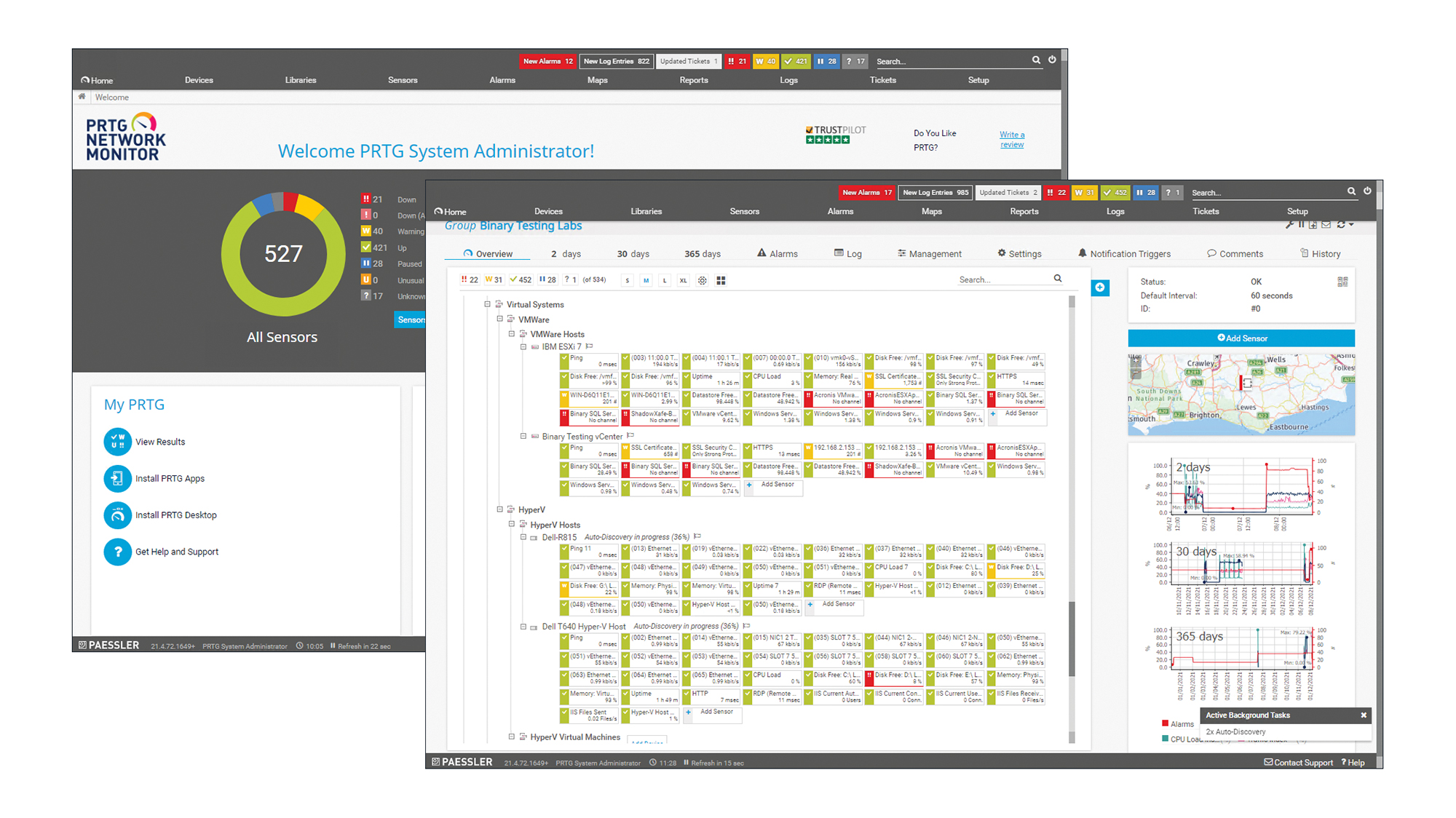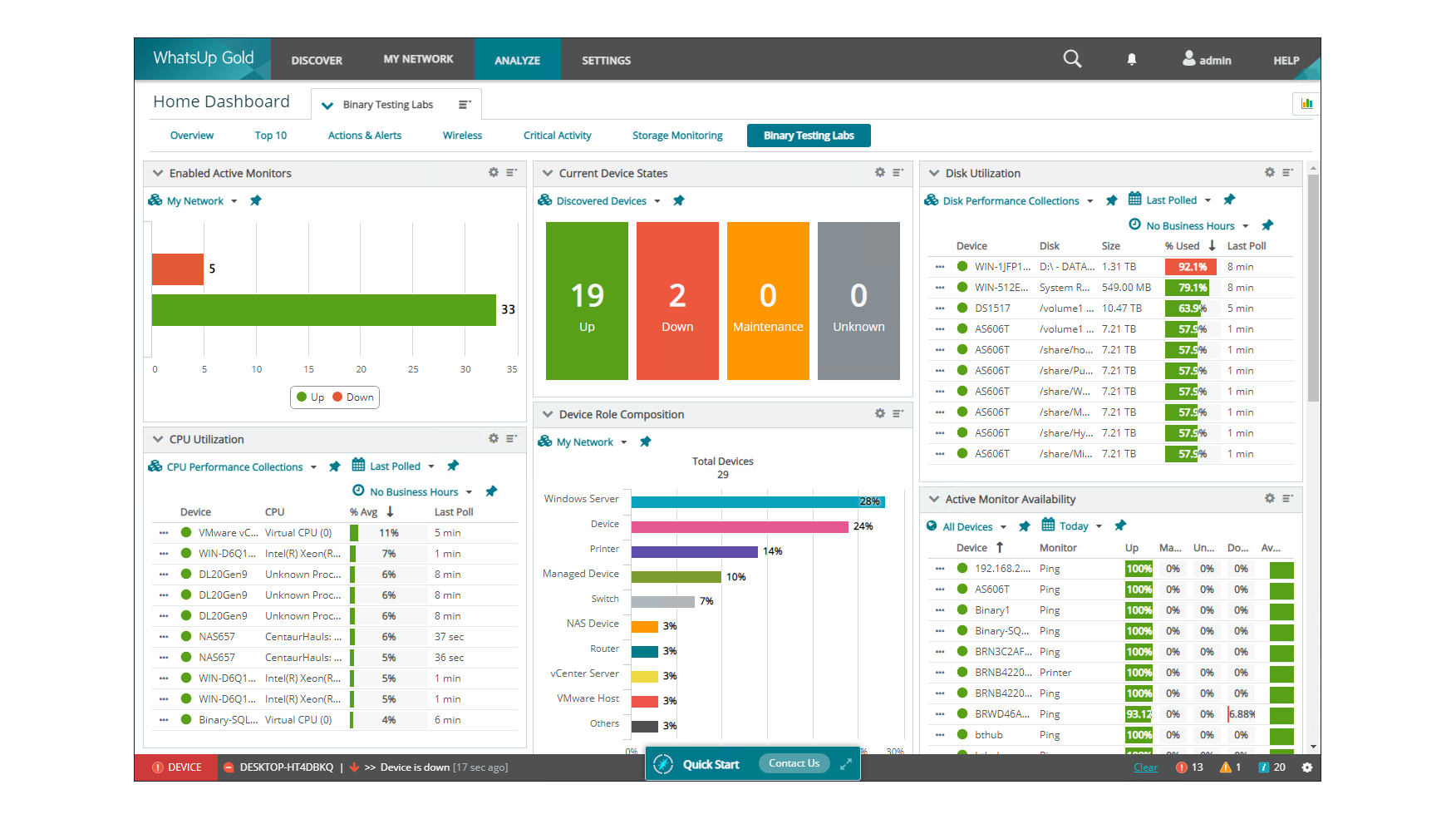Your roadmap to becoming a computer network architect
Explore what a computer network architect does and how to become one

There are several fundamentals in our complex IT systems, and one of the biggest is computer networking, as it links together all our computers together, allowing quick and efficient information sharing and receiving. This information sharing is what allows email, file sharing, IoT devices, and a host of other tasks to work as expected and allow modern businesses to hum along.
Because it's essential in nearly every aspect of business communication, computer network architects are critical cogs in any organization's wheel. The growth of the computer network engineer is highlighted by the US Bureau of Labor Statistics' (BLS) prediction that demand for these architects will rise by 5% by 2029. One of the largest employers of computer network architects is the computer systems design industry, as it accounts for 32.3% of the total architects employed.
RELATED RESOURCE

Channel Pro Insight: A fast guide to central network management
How to stay connected and secure with central network management
The architect's importance in an organization is further confirmed by the average annual pay of $112,690. You don't need a degree in quantum computing to see why this has become such a highly desirable field for IT specialists.
Are you interested in a computer networking role? We've put together this guide to help get you started.
What is computer networking?
You must first know how networks function before you can fully understand computer networking. Well-structured networks allow devices and endpoints to connect, and these networks comprise various switches, routers, and wireless.
Additionally, networks use software protocols to communicate different types of data securely. A familiar example of a wireless computer network is Wi-Fi, whereas a wired network features copper-based Ethernet cables and fiber-optic cables for data transmission.
What does a computer network architect do?
Computer network architects, or network engineers, plan and lay out data communication networks from the ground up. After chalking out a network topology, a network engineer presents the plan to the higher management, explaining its operational implications and benefits.
Get the ITPro daily newsletter
Sign up today and you will receive a free copy of our Future Focus 2025 report - the leading guidance on AI, cybersecurity and other IT challenges as per 700+ senior executives
Depending on the requirements, the proposed networks can vary greatly in size and specification. A local area network (LAN), for instance, spans across a small area, which is perfect for a single-office organization or a cyber cafe. However, for a multinational corporation with numerous offices worldwide, a wide area network (WAN) fits the bill.
Apart from planning and designing, network architects oversee the plan’s execution and ensure it aligns with the network infrastructure. Network architects also research new networking technologies to determine what may cater to an organization’s changing needs.
Popular job titles in computer network architecture
Computer networking encompasses a variety of system-specific job roles. Some of the most important designations are mentioned below:
- Computer systems analyst: Identifies areas for improvement in an organization’s computer systems by determining the existing systems’ strengths and weaknesses.
- Information security specialist: Implements security measures to secure an organization’s computer systems and networks.
- Network administrator: Installs and configures computer networks and systems in addition to fixing network connection problems.
- Systems architect: Designs and deploys an enterprise's integral systems.
How to become a computer network architect
Getting a network architect job can be quite tricky if you don't know what path to take. This three-step guide will help you along the way.
Step 1: Get formal training
A bachelor’s degree in computer science, information systems or a related field is the first step toward becoming a network engineer, as the program will help you understand the basics of network architecture. Also note that certain employers prefer applicants with a master’s of business administration (MBA) in information systems.
This is especially true in the case of firms that move their business through the internet. The two-year course includes business and computer-related subjects to understand network characteristics in the corporate sector better.
Step 2: Gain experience
Most network architects gain five or more years' work experience in a related field, such as network administrator or computer systems analyst, before moving into their main industry.
As beginners, they monitor the day-to-day operation of computer systems and networks, implement security measures to safeguard the system and recommend upgrades when necessary.
As they move up the ladder, many begin to organize computer network specialists to improve existing systems by taking on a managerial role.
Step 3: Earn relevant certifications
Earning a vendor-specific certification is arguably the best way to improve the chances of getting hired by the same vendor. After all, companies require their network architects to be certified in the products they use and manufacture.
Cisco is a fine example of this strategy: the Cisco Certified Design Associate (CCDA), which is a beginner-level certification, offers an insight into the configuration and installation of Cisco-related products besides networking fundamentals.
More senior network architect credentials include:
The road ahead for computer network architects
A computer without a network serves a minimal purpose. As organizations continue to expand their networks, the need for skilled network architects who can design, maintain and upgrade existing networks will continue to rise sharply.
A thorough understanding of modern computer networks and a love for technology will ease your way into the industry, should you wish to kickstart a career in the networking field.
"You will have to constantly learn," says Peter Steenkiste, a professor of computer science and electrical and computer engineering at Carnegie Mellon University in Pittsburgh. "You need to be very much aware of not just about the technologies available today but about the trends. A lot of the designing of networks is effectively upgrading and expanding the networks."
-
 Bigger salaries, more burnout: Is the CISO role in crisis?
Bigger salaries, more burnout: Is the CISO role in crisis?In-depth CISOs are more stressed than ever before – but why is this and what can be done?
By Kate O'Flaherty Published
-
 Cheap cyber crime kits can be bought on the dark web for less than $25
Cheap cyber crime kits can be bought on the dark web for less than $25News Research from NordVPN shows phishing kits are now widely available on the dark web and via messaging apps like Telegram, and are often selling for less than $25.
By Emma Woollacott Published
-
 Delivering fast and secure digital experiences for the modern hybrid workforce
Delivering fast and secure digital experiences for the modern hybrid workforceWhitepaper A new approach to digital experience monitoring that can monitor the health of all systems
By ITPro Published
-
 Cisco to acquire network performance monitoring partner Accedian
Cisco to acquire network performance monitoring partner AccedianNews The IT giant says Accedian’s Skylight platform will enable it to “bring transformational solutions” to its service provider customers
By Daniel Todd Published
-
 BT to slash 55k jobs by 2030 in “brutal” cost-saving plan
BT to slash 55k jobs by 2030 in “brutal” cost-saving planNews The telco aims to become more lightweight through layoffs and digitization
By Rory Bathgate Published
-
 UK to collaborate with South Korea on 5G, 6G development fund
UK to collaborate with South Korea on 5G, 6G development fundNews Alongside the world-first agreement, the sector will see a £25 million boost for research into Open RAN
By Rory Bathgate Published
-
 Rogers Communication to invest C$10 billion in AI, oversight following outage
Rogers Communication to invest C$10 billion in AI, oversight following outageNews Canadian telco giant has promised internal transformation after a network-wide blackout caused major disruption in Canada earlier this month
By Rory Bathgate Published
-

 Paessler PRTG Network Monitor 21.4 review: Hard to beat
Paessler PRTG Network Monitor 21.4 review: Hard to beatReviews This affordable and versatile monitoring solution suits all types of networks with a sensor for every occasion
By Dave Mitchell Published
-

 Progress Software WhatsUp Gold 2021.1 review: More powerful than ever
Progress Software WhatsUp Gold 2021.1 review: More powerful than everReviews Add-ons increase the price, but WhatsUp Gold is easy to use and provides a superb range of monitoring tools
By Dave Stevenson Published
-
 VirtualMetric review: Let down by poor support
VirtualMetric review: Let down by poor supportReviews This server-focused solution exposes a remarkable amount of information, but its flaws are hard to overlook
By Dave Mitchell Published